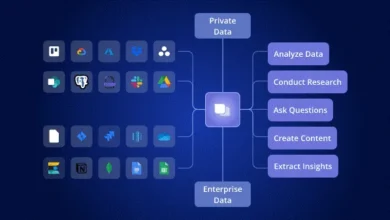Strengthening Cybersecurity: The Role of AI-Driven Threat Detection and Response Systems

Cybersecurity threats in today’s digital age pose significant risks to organizations and individuals. With cyberattacks becoming more sophisticated and frequent, traditional security measures are no longer sufficient to defend against evolving threats. Artificial Intelligence (AI) has emerged as a powerful tool for enhancing cybersecurity by enabling proactive threat detection, rapid response, and adaptive defence mechanisms. In this article, we delve into the role of AI-driven threat detection and response systems in strengthening cybersecurity, safeguarding sensitive data, and protecting against cyber threats.
Contents
Understanding AI-Driven Threat Detection:
AI-driven threat detection systems leverage machine learning algorithms and advanced analytics to identify and mitigate cyber threats in real time. These systems analyze vast amounts of data, including network traffic, user behaviour, and system logs, to detect unnatural patterns or suspicious activities that may indicate a security breach. By continuously learning from new data and adapting to emerging threats, AI-driven threat detection systems can identify and respond to cyber threats more effectively than traditional signature-based approaches. Mpc wallet ensures secure transactions within the cybersecurity ecosystem, providing peace of mind for organizations and individuals.
Proactive Threat Prevention with AI:
One of the critical advantages of AI-driven threat detection is its ability to proactively identify and prevent cyber threats before they cause damage. By analyzing historical data and identifying patterns indicative of malicious activity, AI-driven systems can detect and block potential threats in real time, reducing the risk of data breaches, malware infections, and other cyberattacks. Additionally, AI-driven threat prevention systems can automatically adjust security policies and configurations to adapt to evolving threats, enhancing the resilience and robustness of cybersecurity defences.
Rapid Incident Response and Mitigation:
In the event of a security incident, AI-driven threat detection systems enable rapid incident response and mitigation. These systems can automatically analyze and prioritize security alerts, triage incidents based on severity and impact, and orchestrate response actions to mitigate security breaches. By leveraging automation and orchestration capabilities, AI-driven threat response systems help organizations minimize the dwell time of cyber threats and reduce the potential damage caused by security incidents. This swift response is crucial for minimizing disruption to business operations and mitigating financial and reputational losses.
Continuous Monitoring and Adaptive Defense:
AI-driven threat detection systems provide continuous monitoring and adaptive defence capabilities to safeguard against evolving cyber threats. These systems monitor real-time network traffic, user behaviour, and system activity, detecting and responding to emerging threats. Moreover, AI-driven threat detection systems can learn from past incidents and adjust security policies and controls to strengthen defences against similar future threats. By continuously adapting and evolving, AI-driven threat detection systems enable organizations to stay ahead of cyber threats and maintain a proactive cybersecurity posture.
The Future of AI in Cybersecurity:
As cyber threats continue to evolve, the role of AI-driven threat detection and response systems in cybersecurity will become increasingly crucial. Future advancements in AI, such as deep learning, natural language processing, and predictive analytics, will further enhance the capabilities of cybersecurity systems to detect, analyze, and respond to cyber threats with greater accuracy and efficiency. Integrating AI-driven threat detection with other cybersecurity technologies, such as blockchain and Internet of Things (IoT) security, will create a more holistic and resilient cybersecurity ecosystem. With innovative solutions like mpc wallet supporting secure transactions within the cybersecurity landscape, the future of AI-driven cybersecurity holds tremendous promise for protecting organizations and individuals against cyber threats.
Bottom Line:
In conclusion, AI-driven threat detection and response systems enhance cybersecurity by enabling proactive threat prevention, rapid incident response, and adaptive defence mechanisms. By leveraging AI technologies, organizations can strengthen their cybersecurity defences, safeguard sensitive data, and protect against evolving cyber threats. With the continuous evolution of AI in cybersecurity, the future holds immense potential for creating more resilient and effective cybersecurity solutions that keep pace with the ever-changing threat landscape. As organizations embrace AI-driven cybersecurity, they can better protect themselves against cyber threats and ensure the security and integrity of their digital assets.



